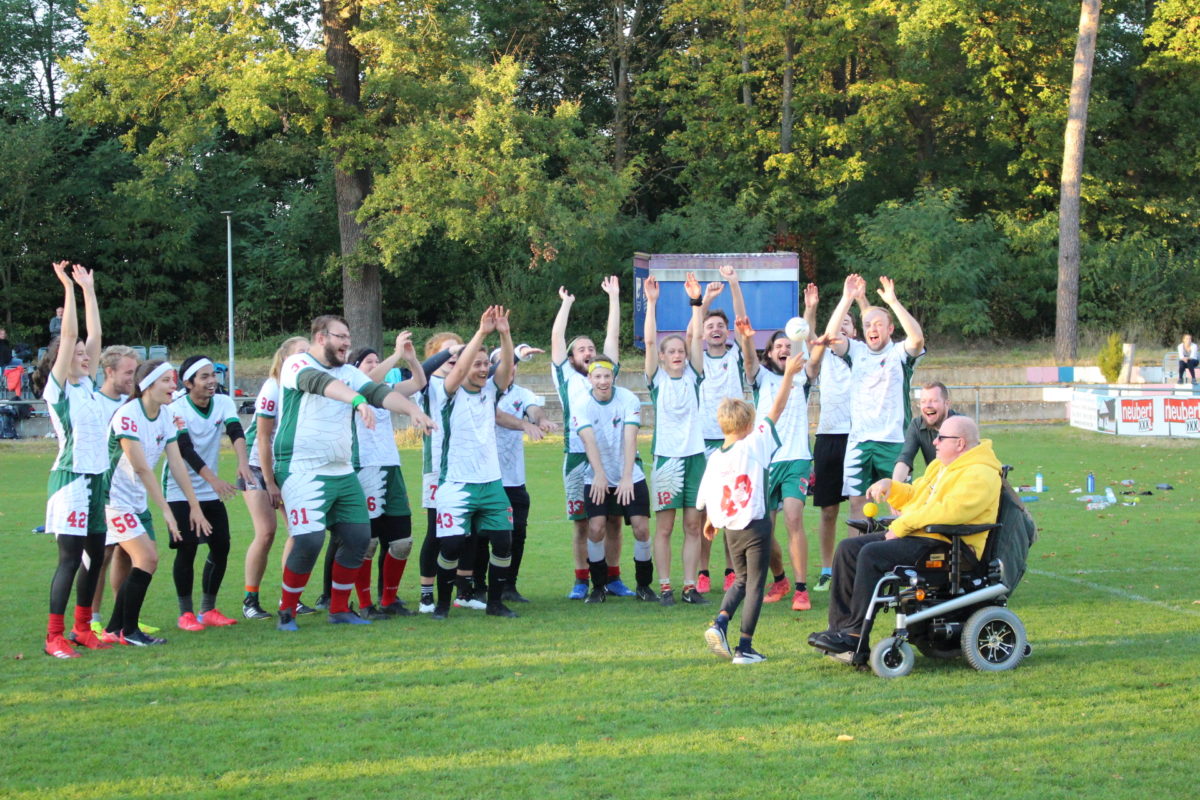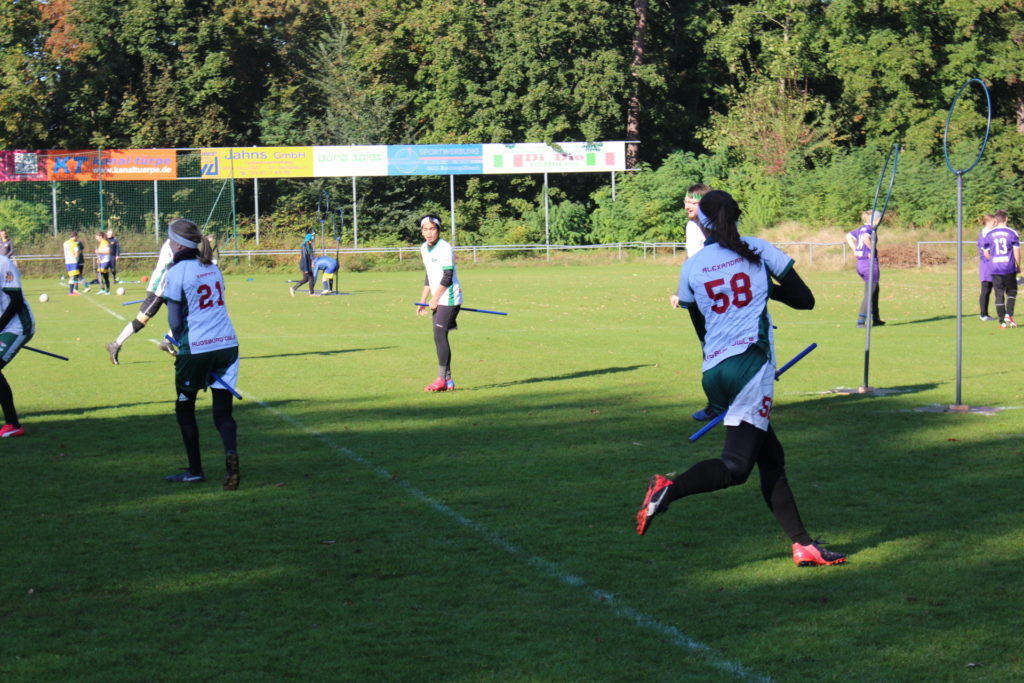We’re heading towards the forest on a muddy path. Four people, making their way through the quiet forest, carrying a wooden palette between us. Our destination is the marked-out route of the new highway A49. As we are walking, the dense forest suddenly opens up and a giant gap can be seen, where the clearing has already begun. As far as your eyes can see, there is nothing but cut down tree trunks, fallen leaves, branches and broken remains of the protests that have been fought there. We are walking away from the graveyard-like place towards the trees that are next on the route. One of us climbs up one of the trees using two loops around the tree which he strains alternately. As soon as a sufficient hight is reached he pulls up the wooden palette und ties it around the tree with some ropes to create a small platform. It’s around six o’clock in the morning as we are leaving the forest. Another group of activists passes us. They will now climb the trees and platforms such as the one we just hung up. They will wait for the police who will arrive between seven and eight o’clock and evacuate the activists from the trees. What’s the purpose of it all? To win time. Time for a forest that can only be cut down as long as there are no people occupying its trees. Time for a forest whose days are already counted.
The clearing of Dannenröder Forst started in October 2020. The forest needed to go since the space is needed for a giant car infrastructure project: the new highway A49. Ever since the decision was made many protestors got loud. Demonstrations and legal campaigns took place, but all that didn’t help to change the situation and people started to occupy the forest. They build tree houses, planned, and organized legal protest camps next to the forest and contributed their whole life to the project. But why are so many people giving up their lives and luxuries of their regular routine to move into a forest in the middle of winter?
Dannenröder Forst is a healthy mixed woodland, some of its trees being up to 300 years old. Nowadays this is not a common thing and together with the huge area it covers, it is very important for plants and animals. That is also why it is classified as a nature reserve. Through its massive size it is home to complex ecosystems, which will be destroyed if the forest is cut in half by a massive highway. Furthermore, the forest is located on a water protection area. The ground water beneath it provides thousands of people with clean drinking water. However, the water will get polluted when the forest is gone or through the building and even more so the usage of the new highway.
In the end the whole project shows us how we keep destroying natural habitats even in such dire times. It is no secret anymore that the climate crisis will become a huge problem even for western countries- and yet our government decided to sacrifice a forest that was able to store CO2, for an outdated piece of infrastructure, that produces further CO2.
The last tree of the main clearing in Dannenröder Forst fell on December 8th, 2020. Some people were aghast, some outraged, some were weeping. As the last tree house falls so do their hopes for a better future.
Author: Linda Ruchti



